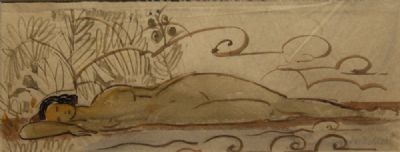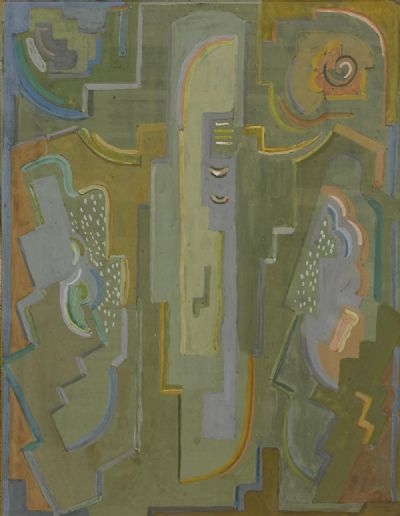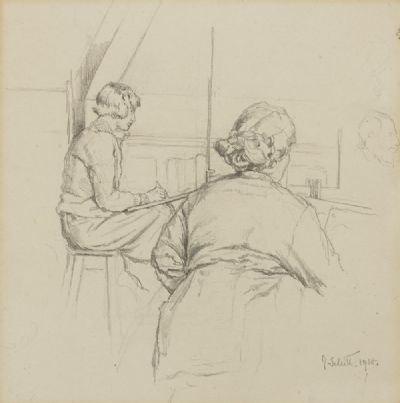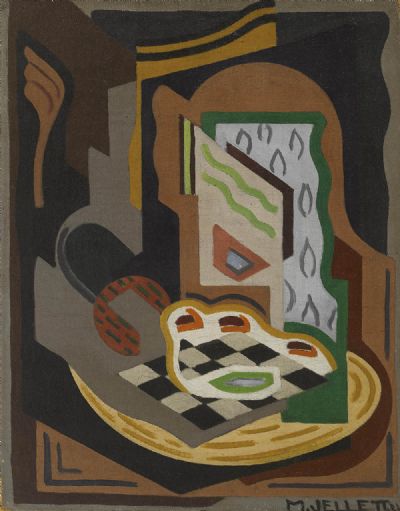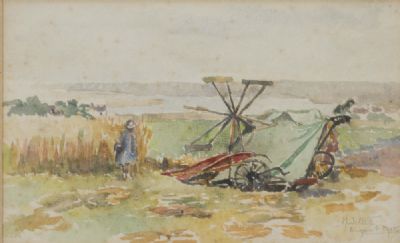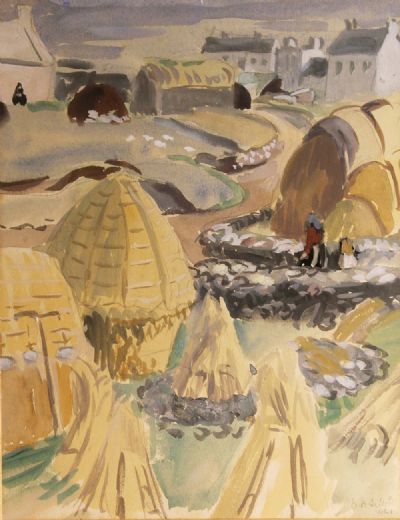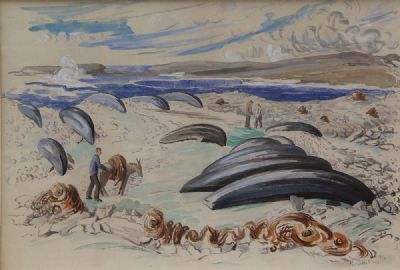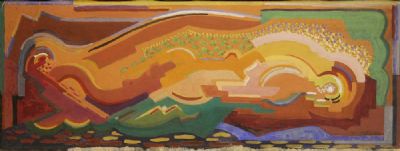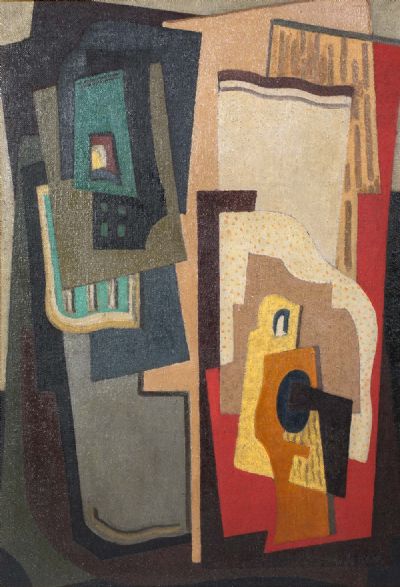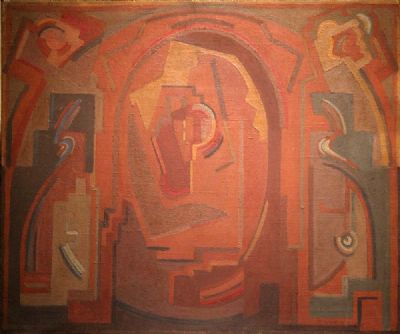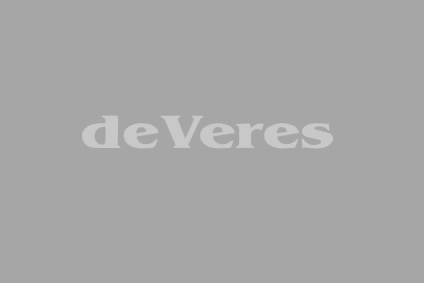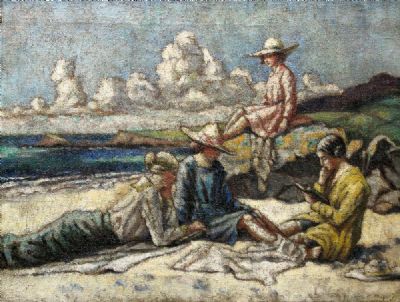Mainie Jellett
Mainie Jellett was born in Dublin to a prosperous family with a professional background. In 1913 she went to Brittany to paint and entered the Dublin Metropolitan School of Art the following year. She studied under Walter Sickert (1860-1942) in Westminster School in London. After visiting Spain in 1920 she went to Paris to study first under André Lhote (1885-1962) and later became a disciple of Albert Gleizes (1881-1953). During this time Mainie Jellett and Evie Hone were close companions and shared the same Parisian artistic instruction. Their art at this time, as a result, was almost indistinguishable.
Jellett first exhibited with the Royal Hibernian Academy in Dublin but by 1923 was working almost exclusively within the Cubist method. She dedicated herself thoroughly to this idiom and while working within the style, also wrote on the movements affinity with Celtic art and christian symbolism. This established Jellett as a pioneer of the abstract modern art movement in Ireland and a central proponent of modern art on the contemporary art scene.
Her work, like that of her contemporary Evie Hone, took a religious direction. She also worked within the directive of stage design for theatre and ballet and decorated the Irish pavilion for the Glasgow fair in 1938. She was one of the founding members and first chairman of the Irish Exhibition of Living Art. Mainie Jellett, along with Evie Hone, are credited with being the first Irish artists to explore purely abstract painting.
Her work has featured in many important exhibitions of modern European painting including in Abstraction-Création 1931-1936 at Münster City Museum, and the Musée d'Art Moderne de la Ville de Paris. Her work has featured in three posthumous exhibitions: in 1962, at the Dublin Municipal Art Gallery; 1974, Neptune Gallery, Dublin; 1991-1992, Irish Museum of Modern Art, Dublin.
Read More
Jellett first exhibited with the Royal Hibernian Academy in Dublin but by 1923 was working almost exclusively within the Cubist method. She dedicated herself thoroughly to this idiom and while working within the style, also wrote on the movements affinity with Celtic art and christian symbolism. This established Jellett as a pioneer of the abstract modern art movement in Ireland and a central proponent of modern art on the contemporary art scene.
Her work, like that of her contemporary Evie Hone, took a religious direction. She also worked within the directive of stage design for theatre and ballet and decorated the Irish pavilion for the Glasgow fair in 1938. She was one of the founding members and first chairman of the Irish Exhibition of Living Art. Mainie Jellett, along with Evie Hone, are credited with being the first Irish artists to explore purely abstract painting.
Her work has featured in many important exhibitions of modern European painting including in Abstraction-Création 1931-1936 at Münster City Museum, and the Musée d'Art Moderne de la Ville de Paris. Her work has featured in three posthumous exhibitions: in 1962, at the Dublin Municipal Art Gallery; 1974, Neptune Gallery, Dublin; 1991-1992, Irish Museum of Modern Art, Dublin.
Read More

